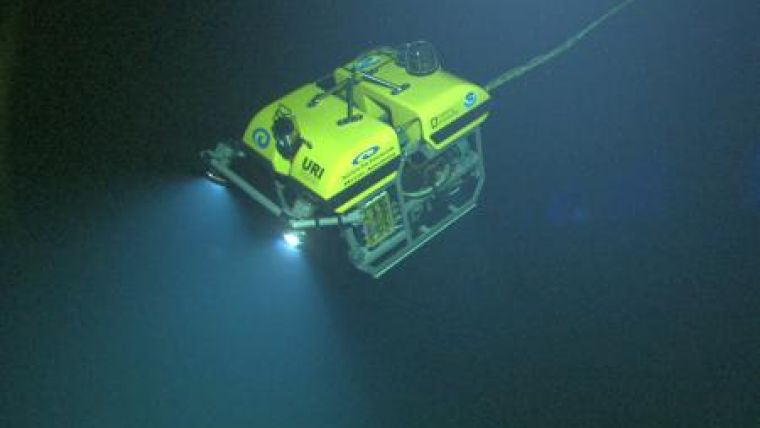Corals and Water Column Study for Gulf Oil Spill Response
A science team on the research vessel Seward Johnson departed Fort Pierce, FL, USA, Friday for the eastern Gulf of Mexico to gather baseline data against which to measure change if oil from the Deepwater Horizon spill reaches the area. The expedition will use a submersible, a ROV and other technology to assess and record conditions in the water column and on the seafloor.
The mission is funded by NOAA's Cooperative Institute for Ocean Exploration, Research and Technology and is led by Florida Atlantic University's Harbor Branch Oceanographic Institute and the University of North Carolina, Wilmington. Other partners include SRI International in St. Petersburg, FL and the University of Miami.
Harbor Branch partnered with Brazilian environmental services company Cepemar for the ship's original planned mission in Brazil. At NOAA's request, these organisations agreed to delay sending the ship to Brazil, making it available to obtain scientific data as part of NOAA's response to the Deepwater Horizon/BP oil spill.
"This is a major catastrophe," said Nelson Saldanha, president of Cepemar. "Florida Atlantic University, Harbor Branch and Cepemar have the flexibility, the expertise and the assets to respond to NOAA's request,"
The information collected will provide a better understanding of the spill's actual and potential environmental effects. Researchers will observe corals and other bottom-dwelling species to establish benchmarks for measuring change that may result from the oil and chemicals used to manage the spill. The team will also assess water quality and the abundance and diversity of life from tiny plankton to the larger species that depend on corals for survival.
Using Harbor Branch's Johnson-Sea-Link manned submersible and UNCW's Phantom remotely operated vehicle equipped with cameras and chemical sensors, the team will assess reef condition and document and track environmental conditions in the region.
The work is expected to take four weeks and is divided into four legs focusing on the deep reefs and hard bottom areas along the east, south and west Florida shelf and slope. Starting from Harbor Branch in Fort Pierce, the expedition will cover a track from the Oculina reefs off the southeast coast, through the Straits of Florida to the Dry Tortugas, north through the eastern and northern Gulf of Mexico and west along the Florida Shelf and slope toward Alabama and Mississippi.
"We are grateful to our partners for making the ship, scientists and crew available for research and monitoring efforts supporting NOAA and the oil spill's Unified Command, and we thank them for their willingness to help," said Craig McLean, acting assistant administrator, NOAA Office of Oceanic and Atmospheric Research. "NOAA frequently joins with other organizations to supplement our research efforts. This is an example of how these partnerships are extraordinarily important, especially during this national crisis."
The R/V Seward Johnson specialises in surface oceanographic procedures and submersible vehicle launch and recovery and has supported NOAA's Office of Ocean Exploration and Research on a number of ocean expeditions. The four-person submersible onboard, the Johnson-Sea-Link, is rated for dives to 3,000 feet and is typically used to study both the mid- and deep-water realms. It can hover in mid-water and rest on the sea floor to allow researchers to make observations and collect samples.
Harbor Branch Oceanographic Institute at Florida Atlantic University is a research institute dedicated to exploration, innovation, conservation and education related to the oceans. The institute specializes in ocean engineering, at-sea operations, drug discovery and biotechnology from the oceans, coastal ecology and conservation, marine mammal research and conservation, aquaculture and marine education.














